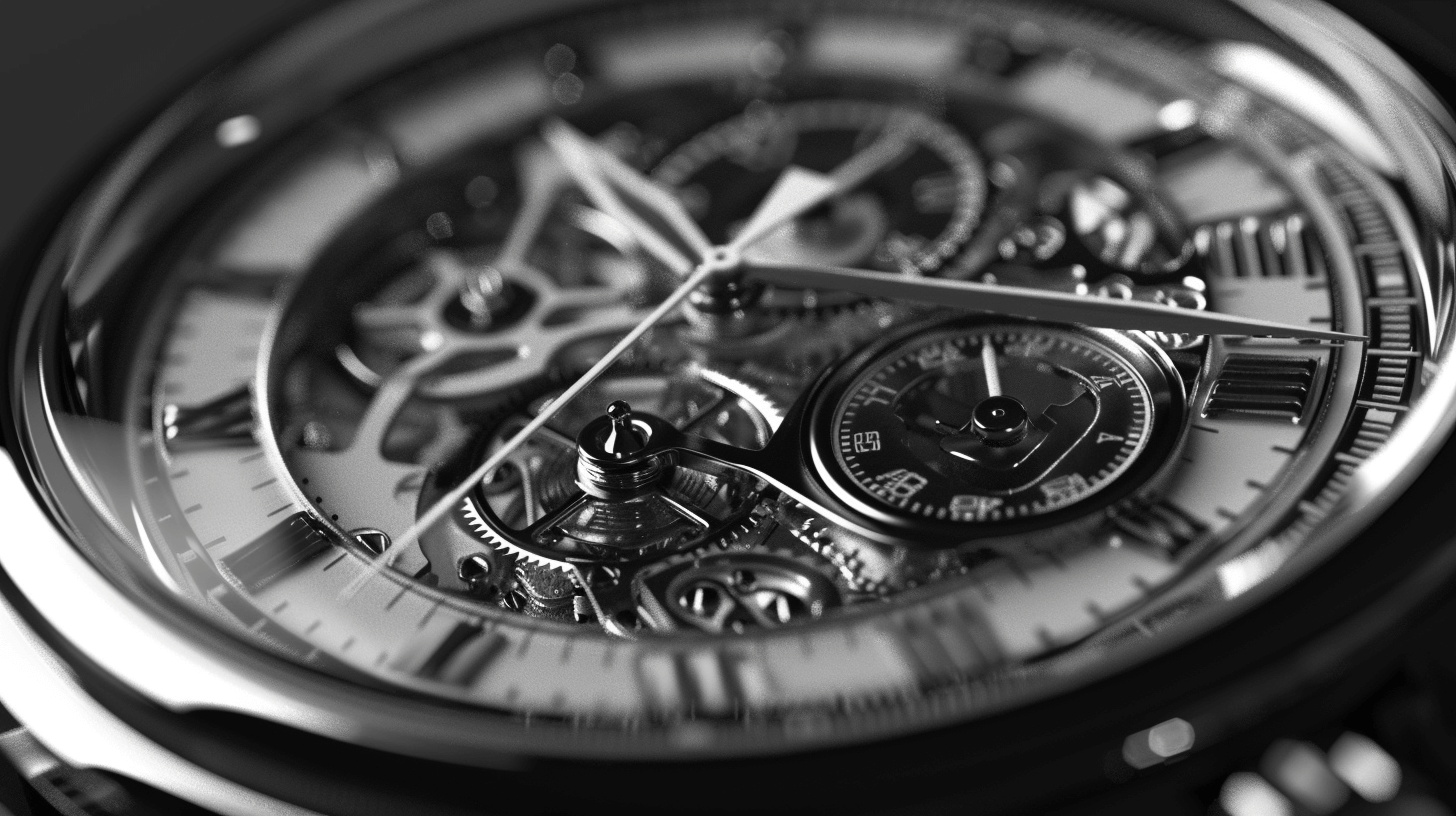Which mechanical movement to choose?

An object of fascination and refinement, the mechanical watch appeals to watch lovers thanks to its precise engineering and timeless operation. Choosing the right mechanical movement can be an exciting but complex journey. In this article, we explore the different options and highlight details to help you make an informed decision.
Automatic movement vs. hand-wound movement
The fundamental distinction between an automatic movement and a hand-wound movement lies in the way energy is accumulated to power the watch.
Automatic movementsAlso known as "self-winding", they use a rotor that rotates freely with the movements of the wrist to wind the mainspring. They are practical for those who wear their watches regularly, as they eliminate the need for daily winding.
The opposite, hand-wound watches require the wearer to wind the crown by hand to make the most of their power reserve. While this task may seem tedious to some, it creates an intimate connection between the watch and its wearer, making the experience more personal.
The various major movement manufacturers
In the world of mechanical movements, certain names stand out for their quality and innovation. These include ETA and Sellita dominate the market, supplying the majority of automatic and hand-wound movements used by many watch brands. Watchmakers such as Seiko and Miyota also offer movements renowned for their robustness and efficiency, often at more affordable prices.
The most popular movements
Some movements are particularly popular, thanks to their reliability and ease of maintenance. The ETA 2824-2, for example, is famous for its robustness and precision. The Seiko 7S26 is another widely recognised movement, appreciated for its affordability and durability. These movements have set industry standards and continue to be the preferred choice for many entry-level and mid-range watches.
Focus on the Sw200 movement from Sellita
The movement Sw200 from Sellita is often compared to the ETA 2824-2 for its very similar technical specifications. Designed as a direct alternative to the reduced distribution of ETA movements, the Sw200 has become a popular choice among independent watch manufacturers. With a power reserve of 38 hours and a capacity to beat at 28,800 vibrations per hour, this movement combines performance and reliability, offering an excellent alternative to more expensive movements.
Comparative table of five mechanical watch movements
Here is a comparative table of five mechanical watch movements, classified according to different budgets:
| Movement | Type | Budget | Main features | Brand/Origin |
| Seiko NH35A | Automatic | Low | Robust, 24 jewels, 41-hour power reserve, 21600 vibrations per hour | Seiko Instruments Inc. |
| Miyota 9015 | Automatic | Medium | High precision, 24 jewels, 42-hour power reserve, 28,800 vibrations per second | Citizen Watch Co. |
| Sellita SW200-1 | Automatic | Middle-High | 26 jewels, 38-hour power reserve, 28800 vibrations per minute | Sellita Swiss Movement |
| ETA 2824-2 | Automatic | Top | Highly reliable, 25 jewels, 38-hour power reserve, 28,800 vibrations per second | ETA SA Manufacture |
| Valjoux 7750 | Automatic Chronograph | Very High | 25 jewels, chronograph function, 44-hour power reserve, 28800 vibrations per hour | ETA SA Manufacture |
The Passage Board
Choosing the right movement for a watch is not just about comparing technical specifications or brands. It's about understanding what kind of relationship you want to establish with your watch. For those who value convenience and ease of use, an automatic movement is generally recommended. On the other hand, if you cherish tradition and ritual, a hand-wound movement could enrich your watch experience! Finally, it is crucial to consider ease of maintenance and the availability of spare parts. More common movement generally means cheaper, more accessible repairs.
